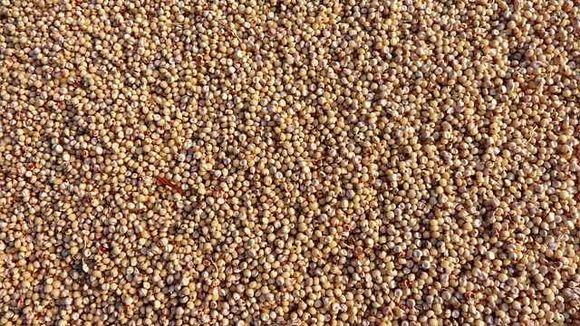What is sorghum (Sorghum bicolor)
Sorghum bicolor is a less well-known grain on the global food market. It ranks in the distant fifth place among most famous cereals - after barley, rice, wheat and corn. Although less popular, sorghum is an important culture that has long played a vital role in certain diets.
Other names for sorghum include large millet, Indian millet and jowar. This is a grass plant believed to originate in Africa, where it remains a major crop. It is grown and sold for a number of purposes except for human consumption. Sorghum is a popular food for animals as well as emerging biofuel.
Today, more than 500 million people in more than 30 different countries rely on sorghum as a key part of their diet. Many people also look at sorghum because of its unique characteristics. In particular, those with celiac disease are attracted to sorghum as it is a gluten-free culture.
In addition, small grains of sorghum are rich in fiber, great food for diabetics, a source of protein, abound in essential minerals and antioxidants.
Nutritional profile of sorghum - what it contains
Sorghum can be cooked and eaten in many ways, but it is also often processed into ingredients for other dishes. A quarter cup of whole grain sorghum contains approximately the following nutritional values:
- Calories: 163 kcal
- Protein: 5 grams
- Fat: 2 grams
- Carbohydrates: 36 grams
- Fiber: 3 grams
One of the most important trace elements in sorghum is iron. A quarter cup of sorghum contains approximately 12% of the recommended daily dose, so vegetarians and vegans can emphasize the consumption of this crop. Other trace elements found in sorghum include:
- Potassium
- Niacin
- Thiamin
- Vitamin B6
- Phosphorus
- Manganese
- Magnesium
Different types of sorghum - what are they used for
Several types of sorghum can be used in different recipes:
- Wholegrain sorghum includes the whole grain, with the three parts - bran, endosperm and germ - intact. You can boil or smother the whole grain and add it to salads, toppings and pilaf.
- The sorghum with pearl grains is devoid of the saws and part of its germ. It is softer than the wholegrain variety and suits soups.
- Sorghum syrup is obtained from the stems of the sweet sorghum. This is a natural sweetener for baked products and other desserts.
- Popcorn sorghum is smaller, sweeter and richer in nutrients than popcorn. It also has fewer calories and less fat.
Potential health benefits of sorghum
Sorghum has a unique structure and is rich in various nutrients, antioxidants, fiber and is gluten-free. Thanks to this, it can provide numerous health benefits to anyone who consumes it.
Anti-inflammatory effects
Sorghum is known to be rich in phenolic compounds, many of which act as antioxidants. It has also been shown to be good for reducing certain forms of inflammation due to its antioxidant properties. [1]
Anti-cancer effects of sorghum
Several of the phenolic compounds in sorghum are associated with anticancer effects. Tani in sorghum, which contribute to the pigmentation of the grain, can inhibit an enzyme associated with the development of breast cancer. [ref. 1]
Another set of phenolic compounds found in sorghum, known as 3-deoxyantocyanidines, have been shown to have a destructive effect on some human cancer cells. [Ref. 2]
Sorghum for weight loss
Starches in sorghum are difficult to digest from the human body compared to other cereals. As a result, sorghum is an excellent addition to any meal to help you feel city without adding too many calories to your diet.
Safe for people with celiac disease and gluten intolerance
Sorghum and its by-products, including sorghum flour, have been identified as a safe alternative cereal for people with co-lyacchia and gluten intolerance. You can replace gluten-containing flour with sorghum in baked goods such as bread, biscuits or other desserts. This wholegrain is also applicable as a saturation healthy garnish to meat and vegetable dishes.










